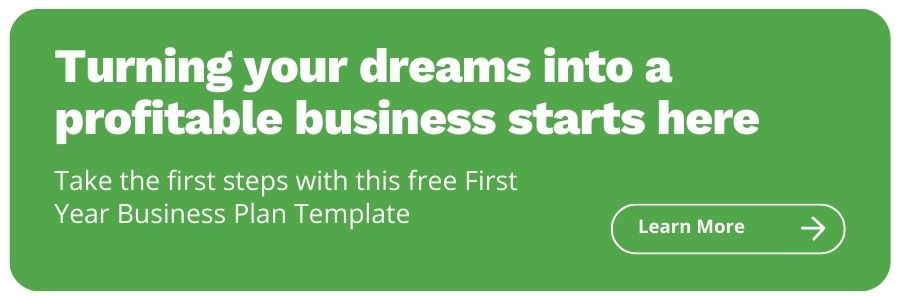How to Find Your Niche as an Independent Financial Advisor: What Would Arlene Say?
Share this
The market of available clients for financial planners in America is massive. It’s impossible to serve every prospective client, and moreover to serve them all well. Every unique niche has its own unique set of financial pain points and needs. When you choose to serve one niche, you’re able to accomplish a few things:
You focus your efforts. This is true for marketing, social media, advertising, continuing education, operations, technology , you name it. A niche helps you focus your efforts and overall business strategy This makes it easier on you as a planner to scale comfortably and do more of the work you love.
You offer higher value to clients. Have you ever heard the saying, “An inch wide, but a mile deep?” A niche practice helps you zone in on what your clients need and improve your knowledge base in those specific areas. You’re able to truly level up your service offering because you’re so focused on one specific area of financial planning. The value you can provide your small niche group of clients skyrockets!
People pick you. They’re not just looking for any random financial planner—they’re looking for you and your specific set of skills or experiences. When a niche group reaches out to someone who specializes in what they need, they know that they’re going to find an immediate fit. You can feel confident that your referrals or new prospects within that niche are going to be a good fit for you too!
You develop better connections with COIs. Struggling to get quality referrals from centers-of-influence (COIs)? Start connecting with other COIs in your niche. You both serve the same target market and can help to grow one another’s networks as a result.
Ready to learn more? First, let’s go over what exactly a niche is.
What’s in a Niche?
Having a niche market means that you’re targeting a specific section of available clients. There are so many different things that can go into a niche, including:
- Income or total assets to manage
- Career path
- Gender
- Education background
- Age
- Values
- Interests
- Attitudes
- Geography
- Financial goals or challenges
(This list is by no means inclusive.)
To create a niche that works best for you specifically, you might even want to combine a few of these niche elements to create your ideal client profile. Now, you may be asking yourself something along the lines of:
“I want to work with physicians, but a lot of other advisors do too. Is that market oversaturated?”
I hear this type of question all the time. The truth is, nothing is oversaturated. There are so many people who need a planner that even if you choose a popular niche, the likelihood that there aren’t enough clients to go around is slim to none. Don’t overthink whether or not there’s “too much competition” in the niche you select.
When you narrow down even further within that niche group, you’re creating an uncontested market for yourself, and the competition will become basically irrelevant. This strategy, called the Blue Ocean Strategy from W. Chan Kim and Renée Mauborgne, is another great reason to get hyper-specific with your niche. The more specific you can get, the more likely it is you’ll be able to find your ideal group of clients with minimum competition for their business.
Picking a Niche
Now that we’ve covered what’s in a niche, let’s explore how to pick a niche.
Picking a niche for your financial planning practice can feel overwhelming sometimes. There are so many options available! That’s why I usually recommend that people don’t just focus on their niche as an overarching demographic that they have to pursue working with. Instead, change your lens, and look at this process as a way of defining your ideal client.
People call this process a lot of different things—I call it “building your ideal client avatar.” To start putting together who this ideal client is, it pays to ask yourself a few questions (and to answer honestly!):
- Who do I enjoy working with?
- What are the problems I love to solve?
- How do I want my day-to-day to look?
- How do I want my clients to act during the planning process? (Do I want them to be engaged? Delegators? A combination?)
- Do I want to share hobbies and interests with my clients?
- If money were no object, who would I love to help?
- Does a certain type of personality, or client trait, rub me the wrong way?
These questions can help you narrow the type of client you want to work with, and what niche you may be best suited to serve.
In some cases, your niche will be partially demographic-based. Maybe you love working with people in a specific area, from a specific career field, or who are facing a unique financial planning challenge (like student loans or retirement planning).
Here are a few examples of demographic-focused niche markets:
- Doctors, attorneys, or engineers (career-based)
- People who are local to you (geography-based)
- Pre-retirees or millennials (age-based)
- People from a specific religion or culture that you’re passionate about (background-based)
However, more often than not, there’s also a psychographic component to your niche. These elements of your niche don’t have to be career-focused, at all!
Maybe you’re looking to work with people who are laid-back, and passionate about traveling. Maybe you love to work with people who have strong family values and want to start thinking about how to build generational wealth.
These concepts don’t just apply to a specific demographic. You may end up working with people from all different walks of life who all have these goals, attitudes, or beliefs in common. That’s okay too!
Here are a few examples of psychographic-focused niche markets:
- People who are focused on Socially Responsible Investing (SRI)
- People who want to leave a legacy behind after they pass away
- People who want to engage in philanthropy
- People who are involved in local or national politics
- People who are dedicated to their community
- Couples who are wanting to adopt in the near future
In reality, your ideal client will probably be a combination of demographic and psychographic components. The key is that you’re building the niche market or ideal client that you’ll be happiest and most successful working with.
The Difference Between an Outbound and an Inbound Niche
Clients often feel this overwhelming fear of missing out when they start trying to pick a niche. They worry about repelling prospective clients.
Here’s what I always say to that fear: having a niche is not the same thing as turning down quality, non-niche clients. I believe that building a niche practice consists of two separate things:
- Inbound prospects
- Outbound niche
Inbound Prospects
When you have a niche, everything you do that has an outbound presence can be related to that niche. This could be the messaging on your website, the social media marketing you do…the whole kit and caboodle.
However, that doesn’t mean that your inbound prospects are all going to match that ideal-client niche.
Non-niche clients can find you in a number of ways. They might be referred to you by a client who is in your niche, they may stumble across your website after doing a local search for fee-only financial planners. Whatever the case is, just because you have a niche doesn’t mean you have to turn away clients who don’t exactly match up with your niche market.
So, how do you know when to turn away a client who doesn’t fall within your niche? There are a few cases where I think it’s okay to accept inbound prospects who don’t match the niche you’re pursuing.
They match your other client avatar characteristics. You’ve put a ton of work into defining your ideal client avatar, so you should be able to pretty easily judge whether or not someone fits the bill even if they don’t check all the demographic-niche boxes (like career path) on your list.
You’ve just started your practice. Are you short on clients because you’ve recently launched your practice? You may not be in a spot to say “no” to non-niche clients. If a prospect is a close fit to what you’re looking for, it’s okay to take them on if you need the revenue as you get started.
Regardless of whether you’re in either of these situations, trust your gut! Even if a client is in your niche and checks all the ideal-client boxes, if you don’t get a good vibe from them, it’s okay to say no! Every business owner has “spidey senses” when it comes to determining which clients are going to rock their socks off, and which clients are going to make them miserable in the day-to-day.
You want to say no to miserable clients, even if the revenue would be nice to have. They’re not worth the drain you’ll feel as you try to grow your business.
Outbound Niche Marketing
Now let’s go over what outbound niche marketing might look like for you. I’ve mentioned that everything you do can be directly related to your outbound niche, but that can be tough to put into practice. This is where your ideal client avatar can come in handy.
I encourage my clients to give their client avatar a name. Let’s take a look at an avatar example and how you could use it in your marketing practices:
Avatar Name: Sarah the SRI-Enthusiast
Sarah is a recently married 30-something-year-old. She works in the tech sector in California and her husband, Joe, is a public education teacher and cross country coach. Sarah and Joe are looking to start their family in the next few years, finish paying off Joe’s student loan debt from earning his Master’s degree in secondary education, and buy an apartment in the Bay area. They’re both equally passionate about socially responsible investing and are actively involved in volunteer work within their community. In the next 10 years, they’d like to move out of Silicon Valley and launch a new app together that helps connect people to volunteer opportunities near them. They have two rescue dogs and enjoy hiking, craft breweries, and taking mini road trips on the weekends.
Can you picture Sarah and Joe? The client avatar can be as specific as you want it to be. In fact, the more specific, the better! Even if people you meet don’t necessarily match all of these specific traits, you still have an idea of the type of people you want to work with.
For marketing purposes, you can use the avatar in so many different ways. One way is to ask yourself questions about your marketing decisions based on your avatar:
- Would Sarah go to this event I’m planning?
- Does Sarah prefer to use Facebook or Twitter?
- What would Sarah look for in my website or blog?
- Is Sarah more of a blog or a podcast person?
Defining your client avatar makes it easier to hone your messaging and marketing efforts to target exactly who you want to work with. Then, when the real-life version of Sarah finds your website, Facebook page, or gets invited to your event by a current client, she’ll know that she’s found the financial planner who can address all of her specific needs.
Cleaning Up Your Client List
Let’s say you’re a few years into your practice, and you’ve recently discovered the brilliance of building your practice around a niche. You might have a few clients in that target market, a few clients who aren’t in that target market but who you enjoy working with, and a few who you took on just to pay the bills. Almost every financial planner has been there. It’s part of entrepreneurship and growth.
It can be challenging as you transition over to running a more niche-focused practice to reconcile the relationships you’ve already built with your rockstar, non-niche clients. Personally, I don’t see a problem with keeping them on. You’re growing this business to bring you joy and fulfillment. Even if they’re not in your ideal niche, if you enjoy working with them, don’t mess with a good thing.
However, I see advisors falling into a guilt trap when they transition to running a niche practice. They become worried that it’s disloyal to leave clients they don’t love in order to serve a shiny new niche. That’s why I recommend a simple formula for deciding whether or not it’s time to weed out a non-niche client as you grow your practice:
High joy, high revenue = Stay. Again, don’t ditch clients on the principle of a new niche. If you love working with them, keep them around.
High joy, low revenue = Maybe. I usually recommend that you keep a few spots open in your practice for lower revenue clients with whom you adore working. Whether this is purely pro-bono work or you just are willing to take the lower revenue because you love the client, it’s okay to keep them on. Just make sure that you’re not letting everyone fall into this category. Set a limit and stick to it!
High revenue, low joy = Maybe. If you have a high revenue client who’s challenging to work with but would financially hurt to lose, you might need to consider keeping them on until you can fully replace their revenue. In the meantime, take careful note about what makes them less than ideal to work with. Keep those traits in mind as you sign on new clients.
Low revenue, low joy = Absolutely not. No explanation needed. If they’re not in your niche, don’t pay you well, and make you miserable, it’s more than okay to let them go and refer them to an advisor who’s going to be a better fit.
Refining Your Niche
You’ve defined your niche. You’ve started signing on amazing new clients in that niche. You’ve cleaned up your current client list so that everyone you work with makes you happy.
What now?
As your business fills, you’ll find yourself evaluating who gets to be on your client roster. Rather than making this into a long, arduous process, I recommend that you work it into your annual business to-do list. Sit down with your client list and ask yourself:
Who’s fun for me to work with? Who’s not?
But don’t stop there! Dig a little deeper to uncover the “why” behind your answers. What you’ll likely come to realize is that there’s a subset of your niche that you really love working with.
For example, you might start out with the relatively broad niche of teachers who work at a public high school. It seemed specific at the time, but there are a lot of personality types and people who fall into that category. As you’ve grown through the years, you start to realize that you love working with the teachers on your client roster who are five years out from retirement, are married to a non-teacher, and who want to spend their retirement hanging out with their grandkids.
And guess what? That’s okay! You get to be as specific as you want to be. There’s no such thing as becoming “too niche” as you keep growing your practice. The more specific you can be, the more value you’re able to provide in the long run and the happier you’ll be working with your specific subset of clients.
Is My Niche Viable?
Even if you’re totally sold on the idea of building your practice around a niche, you might still be wondering:
Is the niche I’ve picked actually going to work?
The good news is that deciding on an ideal, profitable niche doesn’t have to be a guessing game. You have several resources available to you to help you hone in on what your ideal niche looks like.
Ask prospective clients. If you feel like your niche is too narrow, don’t be afraid to ask prospective clients about what they’re looking for in an advisor. They have nothing to lose from telling you the truth, and you might be surprised by their answer!
Talk to other advisors. Are other advisors targeting your specific niche? Reach out to them! They might be able to give you some insight into whether or not working with that specific niche has been challenging, or whether it’s not going to be as difficult as you think.
Find referral sources. Are there COIs in your network who work with this same group of people? Contact them to set up coffee or a virtual meeting. You might be able to refer people to one another and expand your prospect pool that way.
Do some digging. If you ever have questions, don’t be afraid to do the research. Sending out surveys, looking into local communities that your niche clients might be involved in, and figuring out your niche clients’ financial pain points can help you build a service plan that works for them (and you).
Talk to a coach. Still struggling to hone your niche or ideal client? This is what coaches are for! Whether it’s me, or another coach who specializes in working with financial planners, talking to a coach about who you want to work with, and how to build your practice around them, can be a game changer.
 About Arlene Moss, Executive Coach
About Arlene Moss, Executive Coach
Arlene gets a kick out of helping financial advisors get over being overwhelmed and take on their frustrations so their businesses soar. Arlene works to ensure XYPN members are able to help their clients prosper while creating a sustainable business model. Through XYPN Academy and one-on-one coaching, members get the support they need to grow their businesses and overcome the challenges that come their way.
Share this
- Advisor Blog (721)
- Financial Advisors (244)
- Growing an RIA (128)
- Business Development (95)
- Digital Marketing (95)
- Marketing (92)
- Community (82)
- Start an RIA (76)
- Coaching (74)
- Running an RIA (72)
- Compliance (70)
- Client Acquisition (68)
- Technology (67)
- Entrepreneurship (64)
- XYPN LIVE (64)
- Fee-only advisor (49)
- Sales (49)
- Bookkeeping (46)
- Client Engagement (45)
- Practice Management (44)
- XYPN Books (43)
- Scaling an RIA (42)
- Investment Management (41)
- Client Services (31)
- Employee Engagement (31)
- Financial Education & Resources (31)
- Lifestyle, Family, & Personal Finance (31)
- Market Trends (26)
- Journey Makers (24)
- Process (18)
- Niche (13)
- SEO (9)
- Career Change (8)
- Partnership (8)
- Transitioning Your Business (7)
- Sapphire (6)
- Persona (4)
- Transitioning To Fee-Only (4)
- Emerald (3)
- Social Media (3)
- Transitioning Clients (3)
- RIA (2)
- Onboarding (1)
Subscribe by email
You May Also Like
These Related Stories

When Financial Advisors Want to Change Their Niche: What Would Arlene Say?
Jul 19, 2018
12 min read

Reducing the Lifestyle Practice Stigma: What Would Arlene Say?
May 17, 2018
12 min read
.png?width=360&height=188&name=WWAS%20(25).png)



.png?width=600&height=400&name=PW%20%20Insider%20Insights%20YT%20Thumbnail%20Image%201920%20%C3%97%201080%20px%20(1).png)

